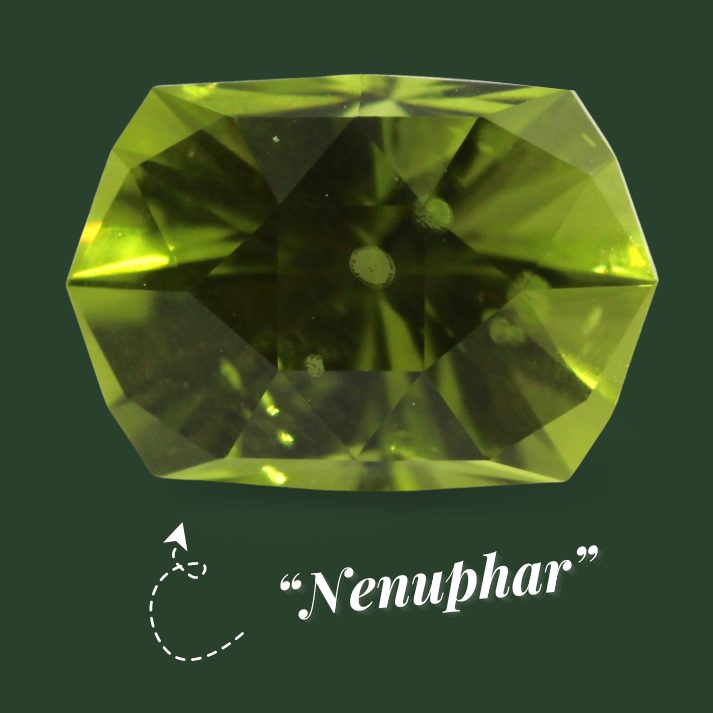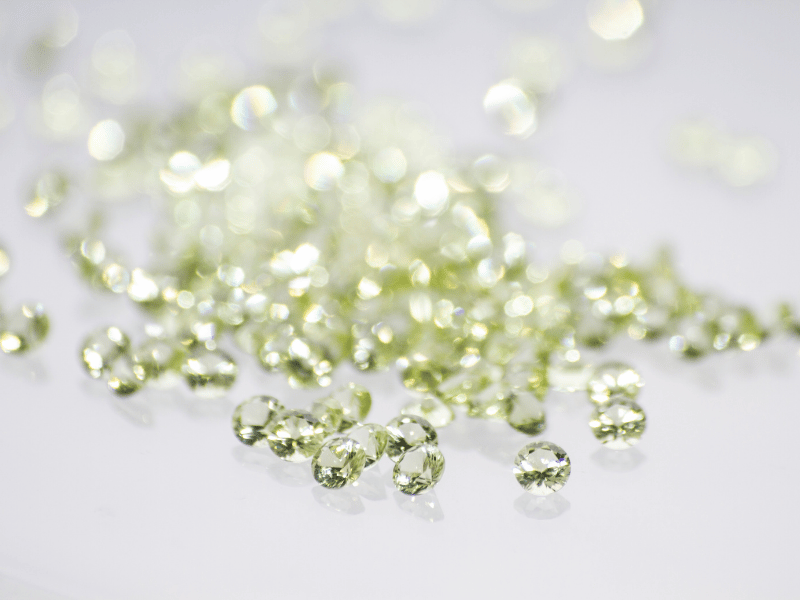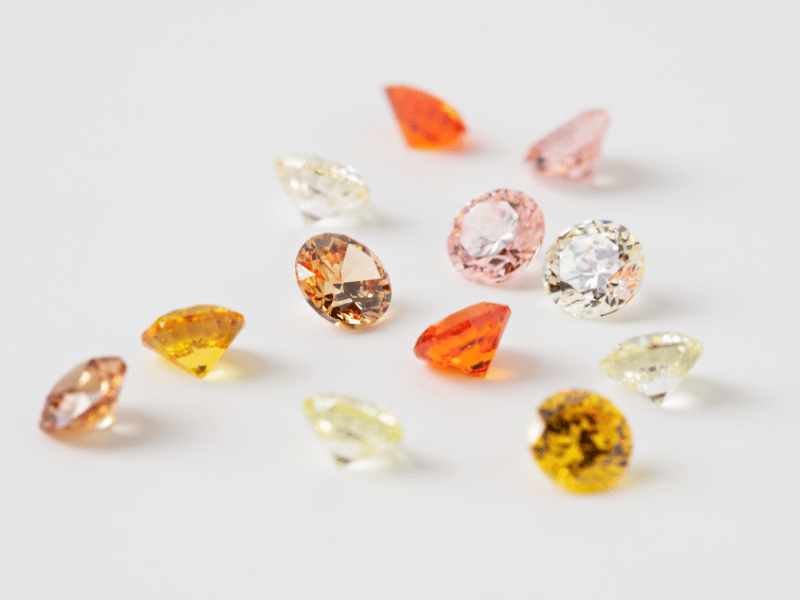Peridot is a semi-precious natural stone that is especially valued for its bright green color. It displays very distinctive shades that can vary from olive green to linden green and apple green. In most cases, it appears transparent.
Peridot crystals are notable for forming at depths equivalent to those of diamonds.
It is quite likely that the origin of the word peridot is the Arabic faridat which means gemstone. Peridot has long been called “volcanoes’ chrysolite”.
As a matter of fact, up until the 19th century, “chrysolite” was the name given to most of gems with golden hue, and even more specifically when the hue was golden-green.
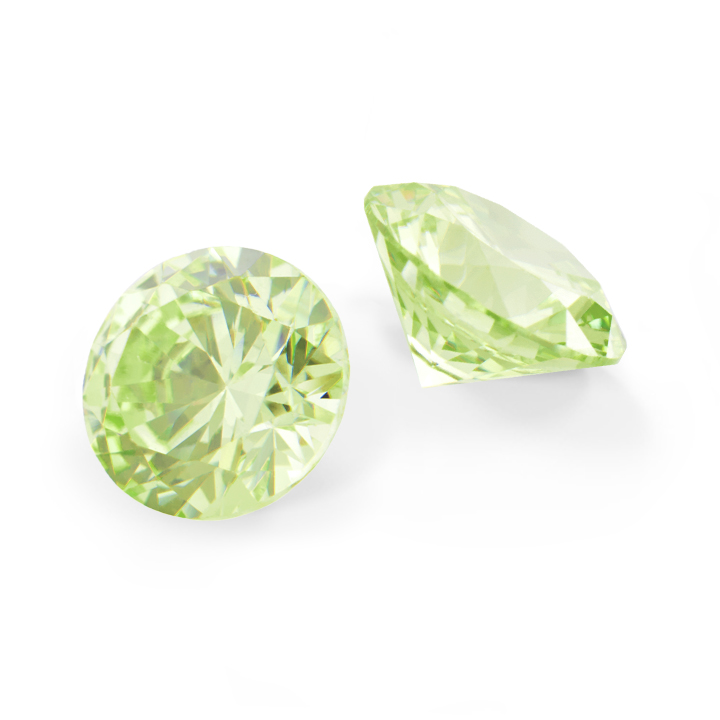
The Characteristics of Peridot

Peridot is an iron and magnesium silicate (Mg,Fe)2SiO4. Geologists will more generally call this semi-precious stone olivine, which is indeed defining its own mineralogical family.
The more iron Peridot contains, the more vivid its golden-green color is. But when this mineral does not contain iron, it is colorless and then called forsterite. . In contrast, when it contains iron only, it features brown to black hues, and it is mineral called fayalite.
Olivine stones form what in gemology is referred to as a continuous series: this characterizes a mineral which chemical composition can evolve steadily between two most distant compositions, which are called pure poles. Hence, peridot is made of between 5 to 15% iron, and the rest is magnesium.
Physical Properties
Its Hardness
These semi-precious stones feature physicochemical properties of their own.
Peridot is a stone with rather good resistance to scratches: its hardness comes close to 7 on the Mohs scale, which means it gets scratched by quartz but will scratch orthoclase.
Its Density
Density is generally between 3,30 and 3,48. Which is an average density compares to other existing gems.
Its Resistance
Peridot’s mechanical strength and chemical resistance are globally average. It is necessary to be careful about some chemical products such as hydrochloric acid, for instance.
Melting point of peridot is high (1’400°C) which means that the thermal resistance of this gem is good.
It is yet advisable to be cautious, as in some cases the flame of a blowtorch will reveal cracks on stones, specifically the ones that display inclusions.
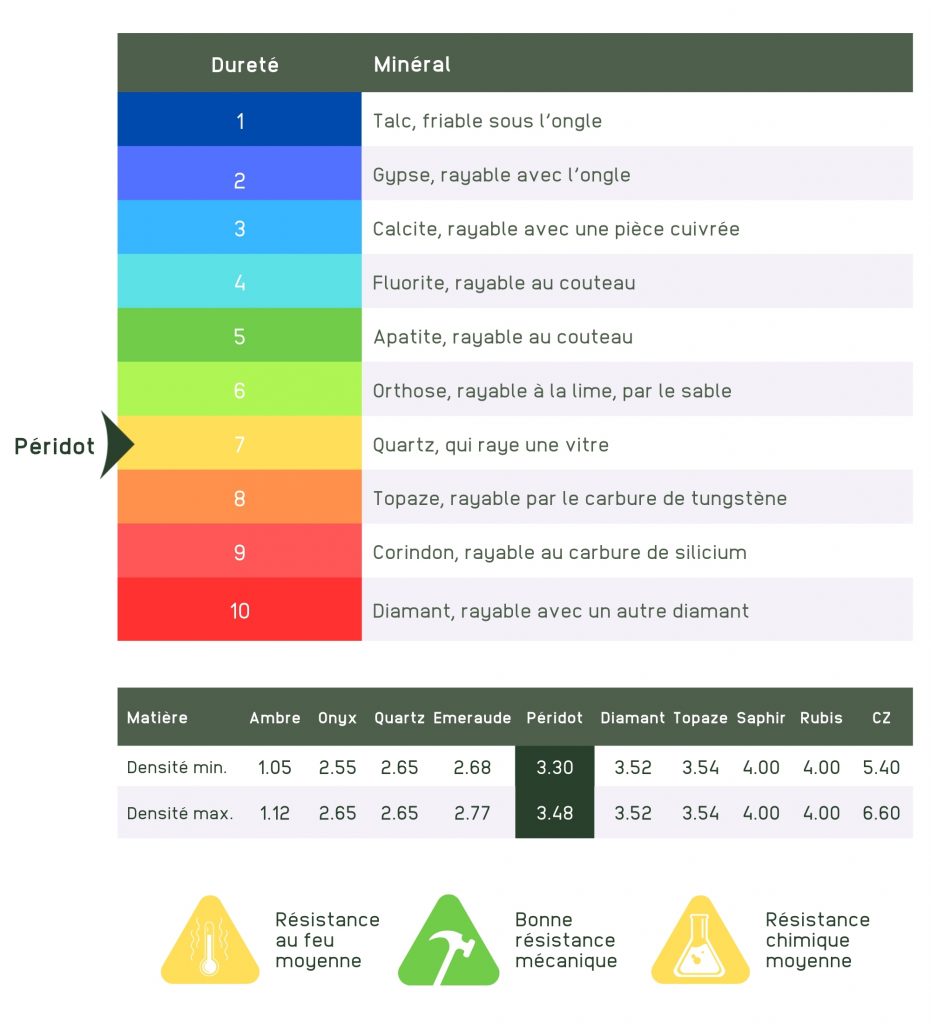
Deposits

Deposits of peridot can potentially be found over all continents of the globe.
It is likely that peridot crystals have been extracted since the 1st millennium B. C., on a small island of the Red Sea called Zabargad, near the peninsula of Ras Banas in Egypt.
This deposit is Egypt’s most renown one, but it is now derelict.
The main countries to extract this stone are today: Pakistan, the United States, China, and Myanmar.
Facts about peridot stone
The earth’s subsurface houses a very large variety of gems, but what is unique about this stone, is that some of them come from space! Indeed, some meteorites that are made of a rock called “pallasite” contain peridots.
The first samples of extraterrestrial peridot were discovered about 50 years ago in Argentina.

Due to peridots are gems that generally form in depths of the earth, they often display inclusions. One typical form of inclusion in peridot is called the “lily pad”. It is an inside black crystal (chromite) surrounded by a tension halo; it occurs upon geological moves of the gem.
